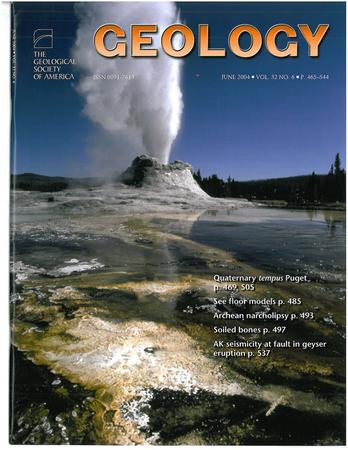新特提斯的长期俯冲起始:来自变质鞋底年代学的启示
IF 4.6
1区 地球科学
Q1 GEOLOGY
引用次数: 0
摘要
俯冲起裂(SI)是板块构造的一个关键过程,由于地质证据有限,人们对其了解甚少。变质底(MSs)是俯冲板块高温变质作用的结果,有可能为SI提供重要的见解。本文通过结合锆石、磷灰石和钛矿U-Pb年龄及其稀土元素模式,重新评价了雅鲁藏布江中部蛇绿岩(YZO)中MSs的形成时间。结果表明,MSs的形成时间为145 ~ 115 Ma,其原岩形成时间不晚于160 Ma。与ms和大部分YZO年龄(130 ~ 120 Ma)相比,原岩年龄明显增大,表明雅鲁藏布江缝合带的新特提斯SI可能发生在不同年龄的海洋岩石圈之间的转换断层或破裂带或沿大陆边缘。MSs广泛的年龄范围表明了一个持续的SI,跨度近25 m.y,可分为两个不同的阶段:(1)停滞阶段(145 ~ 133 Ma),以缓慢的俯冲速率和干燥的地幔为标志;(2)解锁期(133 ~ 120 Ma),俯冲速度加快,上板块快速伸展,形成YZO。此外,我们记录了一个晚期(后si阶段;120−115 Ma)的MSs比YZO年轻,这意味着持续的俯冲可以在较长时间内产生MSs。这些观察结果为新特提斯SI的动力学提供了新的见解。本文章由计算机程序翻译,如有差异,请以英文原文为准。
Protracted subduction initiation of the Neo-Tethys: Insights from metamorphic sole chronology
Subduction initiation (SI), a key process in plate tectonics, remains poorly understood due to limited geological evidence. Metamorphic soles (MSs), which result from the high-temperature metamorphism of the subducted plate, hold the potential to offer crucial insights into SI. Here we reevaluate the formation time of MSs in the central Yarlung Zangbo Ophiolite (YZO) by integrating zircon, apatite, and titanite U-Pb ages with their rare earth element patterns. The results reveal that formation time of MSs is 145−115 Ma, and their protoliths were formed no later than 160 Ma. The significantly older protolith, in comparison to MSs and the majority of YZO ages (130−120 Ma), suggests that the Neo-Tethyan SI in the Yarlung Zangbo suture zone likely occurred along a transform fault or fracture zone between oceanic lithosphere with different ages or along a continental margin. The extensive age range for MSs indicates a protracted SI spanning nearly 25 m.y., which can be divided into two distinct stages: (1) the stagnant stage (145−133 Ma), marked by a slow subduction rate and a dry mantle; and (2) the unlocking stage (133−120 Ma), characterized by an accelerated subduction rate and rapid upper plate extension, leading to formation of the YZO. Additionally, we document a late-stage (post-SI stage; 120−115 Ma) of MSs that is younger than the YZO, implying that sustained subduction can produce MSs over extended periods. These observations provide new insights into the dynamics of the Neo-Tethyan SI.
求助全文
通过发布文献求助,成功后即可免费获取论文全文。
去求助
来源期刊

Geology
地学-地质学
CiteScore
10.00
自引率
3.40%
发文量
228
审稿时长
6.2 months
期刊介绍:
Published since 1973, Geology features rapid publication of about 23 refereed short (four-page) papers each month. Articles cover all earth-science disciplines and include new investigations and provocative topics. Professional geologists and university-level students in the earth sciences use this widely read journal to keep up with scientific research trends. The online forum section facilitates author-reader dialog. Includes color and occasional large-format illustrations on oversized loose inserts.
 求助内容:
求助内容: 应助结果提醒方式:
应助结果提醒方式:


